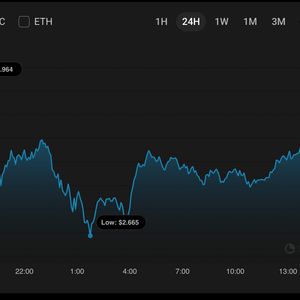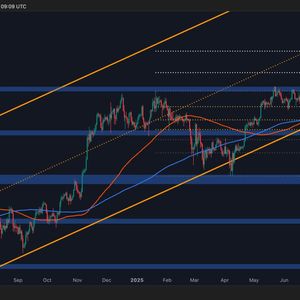Coinbase backs Canadian stablecoin QCAD in push for borderless payments
3 min read
Lucas Matheson, the CEO of Coinbase Canada, revealed that the company has teamed up with Canadian stablecoin issuer Stablecorp to assist in marketing its fiat-collateralized stablecoin, QCAD, and is investing an undisclosed sum in it to increase access to tokenized Canadian dollars at the Blockchain Futurist Conference in Toronto. Matheson stated they requested the federal government create a national digital assets strategy. Based on his argument, crypto is strategic; therefore, they hoped the new administration would recognize the strategic importance of cryptocurrency. This followed the April federal elections in Canada, which resulted in the election of Prime Minister Mark Carney, who had previously expressed disapproval of cryptocurrencies. Matheson highlights the necessity of a stablecoin for the Canadian market In an exclusive interview on May 13, Matheson acknowledged the existence of a stablecoin for Canadians as crucial. He further stated that stablecoins are particularly necessary because the nation has “no peer-to-peer [payment] rail” and “wire transfers cost $45 and take 45 minutes of paperwork.” Moreover, he claimed that stablecoins make it possible to make 24/7, instantaneous, borderless payments, which was already possible with current technology. According to Stablecorp’s website, the most recent report on QCAD’s fiat reserve backing was from July 2024, when there was only about $175,000 worth of QCAD in circulation. On the other hand, the US dollar-backed stablecoins Tether and USDC make up the majority of the stablecoins’ $245 billion market capitalization as of May 13, according to CoinGecko data. In light of these variations in the stablecoins, Matheson emphasized the need for a stablecoin created especially for the Canadian market to solve present problems with the payment infrastructure. In addition, Coinbase stated in a blog post on March 26 that Canada lacked a clear path for stablecoin adoption , partly because its government has not yet removed securities regulation barriers for fiat-backed stablecoins. The exchange further stated that it must start considering instruments instead of securities. Meanwhile, according to the US Securities and Exchange Commission’s April statement, if stablecoins were only promoted to make payments, they are not considered securities in the country. Canadian voters expressed their strong desire for a digital assets strategy during the April election According to WonderFi CEO and President Dean Skurka, Canadian voters demonstrated that they wanted the government to take action on cryptocurrency when they cast their ballots on April 28. Based on his argument, this could be achieved if policymakers followed the United States and Europe in fostering an environment more conducive to blockchain development. Additionally, that month, Canadians eagerly awaited the political leaders’ plans regarding digital assets as the country’s federal election approached. This resulted from millions of Canadians owning, using, or working in cryptocurrency, which was becoming an increasingly important area for innovation and economic growth. Most of this active base was under 50, making them a powerful political force. The election and the administration had an opportunity for policymakers to encourage voters’ desire for clarity regarding Canada’s digital future. In 2022, Conservative Party leader Pierre Poilievre gained popularity when he supported Bitcoin and decentralized finance, giving people more control over their finances and, therefore, less control over politicians and banks. He aimed to make Canada the world’s blockchain capital and for its people to embrace digital currencies such as Bitcoin to escape inflation. While he is a fan of digital innovation, Mark Carney, a former governor of the Bank of Canada affiliated with the Liberal Party, has yet to be persuaded that digital coins such as stablecoins will upend the monetary system. He has argued that digital currency would have a more solid and secure foundation because of central bank digital currencies, or CBDCs He said stablecoins were not a revolutionary alternative to the traditional monetary system but merely an extension. Carney stated that CBDCs would form the basis of a more stable, programmable financial future and lower the risks associated with digital currency. Your crypto news deserves attention – KEY Difference Wire puts you on 250+ top sites

Source: Cryptopolitan



